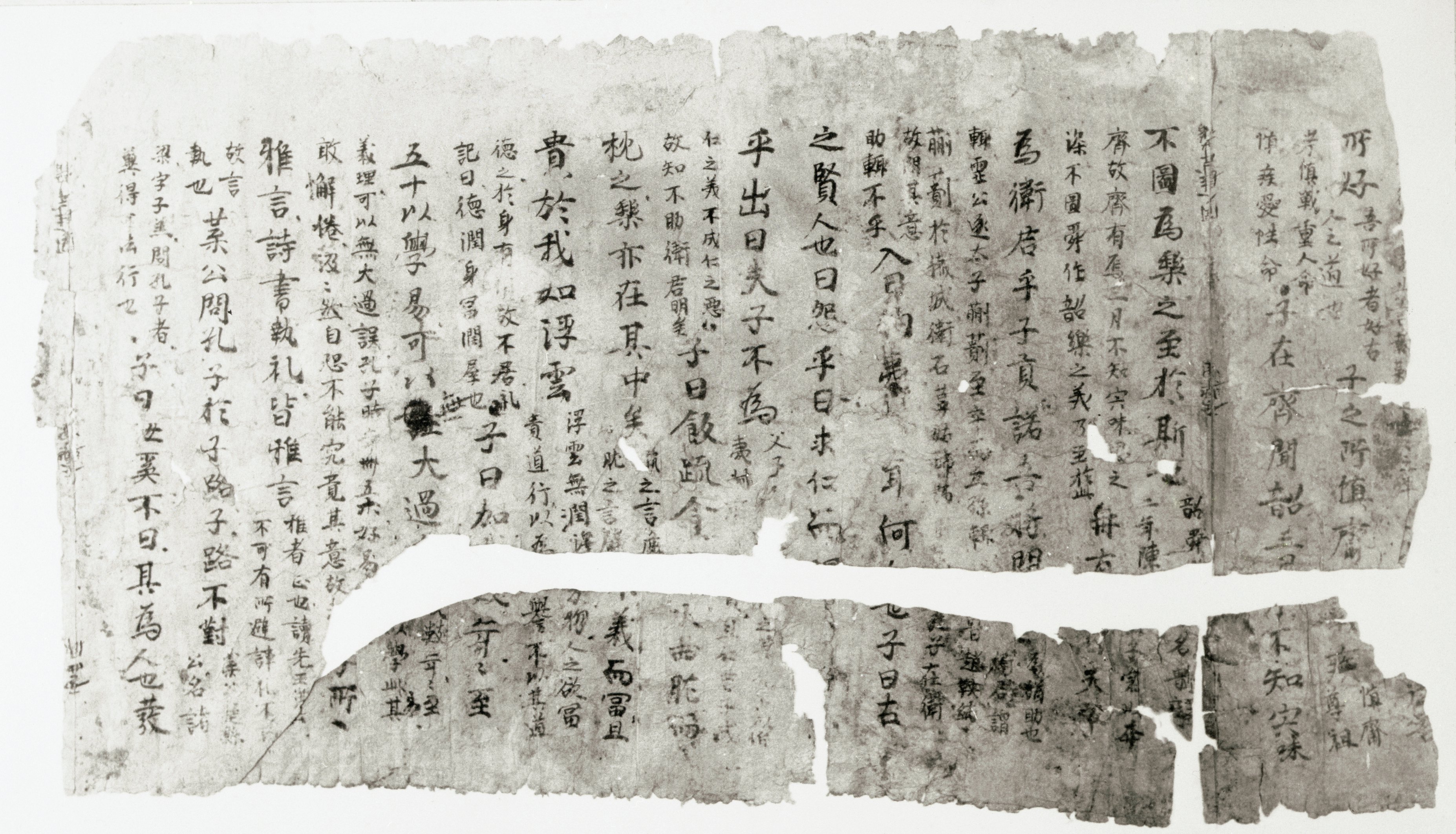
Two sets of sacred documents — the Gutenburg Bible and the Spring and Autumn Annals of Confucius — chronicle two religious traditions separated by cultures and entire continents.
We might not know of these documents’ existence today without one invention: The printing press. This singular machine has enabled the mass distribution of knowledge — understanding the first iterations of this technology are key to understanding the modern world, and the future.
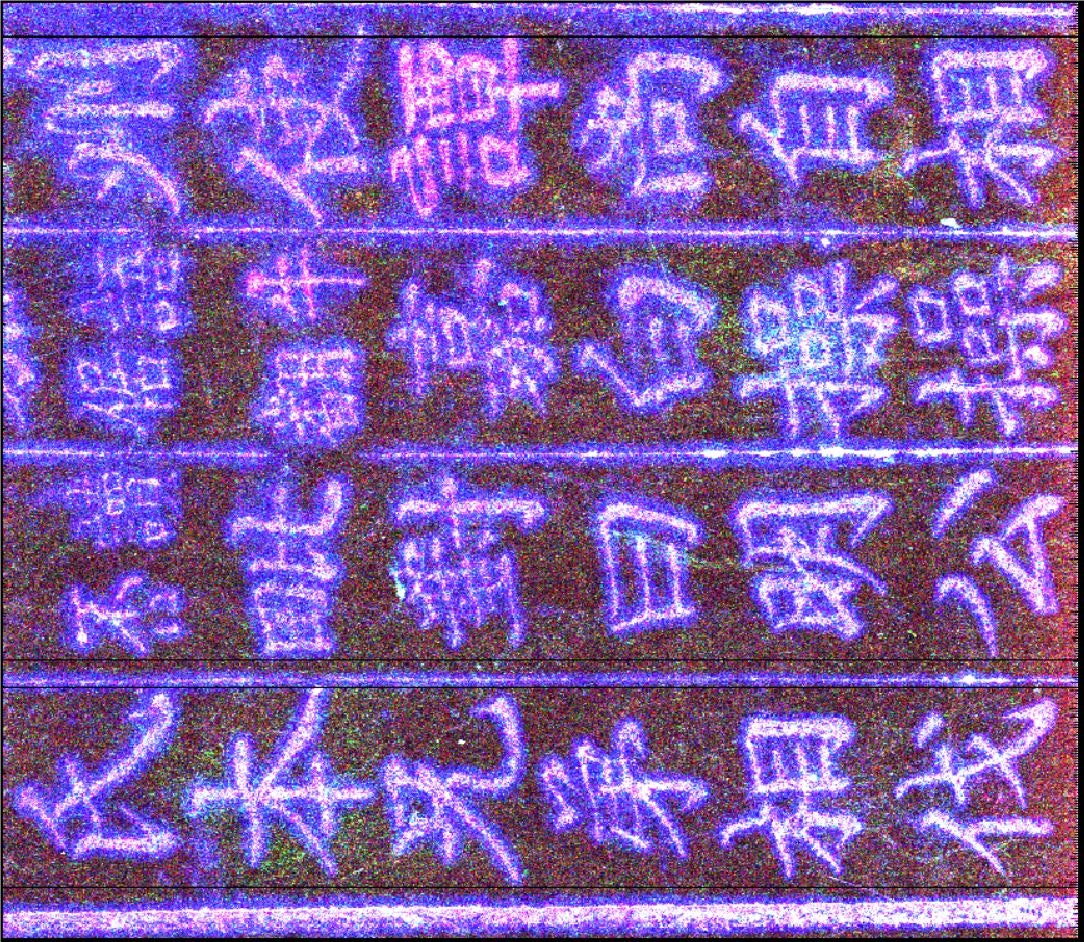
Travel back in time with us to Korea in 1442, during the Choson Dynasty. That’s when the Royal Government Publications Office used an early version of the printing press to mass-produce the writings of the ancient Chinese philosopher Confucius for the first time. Their press featured moveable type — the letters could be shifted and reconfigured as individual stamps.
Then in Germany around 1448, goldsmith Johannes Gutenberg built his legendary printing press. Historians credit it as the trigger for all the innovations that propelled Europe out of the Medieval era and into the Renaissance and beyond.
Gutenberg’s invention, which also featured moveable type, allowed for the first mass production of the Bible. Suddenly, monks didn’t have to painstakingly copy scripture by hand. In its first decade of use, the Gutenberg press printer 180 Gutenberg Bibles — about 49 of these survive today.
Pressed for answers
But there’s a twist: The Confucian texts and the Gutenberg Bibles may have been printed a mere decade apart, but the Korean government used methods that had existed for at least 70 years that had originated in modern-day China. So while Gutenberg is the name the West remembers, Asian peoples were likely the first to ever use a printing press with moveable type to produce books and texts.
It’s also unclear whether the two printing press technologies emerged independently — or if Gutenberg took inspiration from Asia. To find out if Gutenberg was a true pioneer, a team of scientists from the SLAC National Accelerator Lab in Menlo Park, California, trained powerful X-ray beams on the sacred texts to reveal the secrets within.
To solve the nearly 600-year-old mystery, researchers might compare the construction of Gutenberg’s press with the one used by the Korean government. Both used metal letters, and it’s possible that Gutenberg knew of the Korean machine and built one using similar metal alloys, like nickel and copper.
He also may have concocted ink using a similar technique to the ink used in Korea, which was typically composed of burnt vegetable oil and glue. But since none of these ancient presses remain, the researchers can’t perform that kind of in-depth examination.
“We can’t really say one affected the other.”
“All we have to go on are some paintings, but we don't know if those paintings were portraits of the printing press or interpretations,” Minhal Gardezi, a University of Wisconsin-Madison graduate student who works on the project at SLAC, tells Inverse.
To extract the crucial clues hidden in the ink and metal residues, a powerful X-ray at SLAC called the Stanford Synchrotron Radiation Light Source can carefully scan original copies of the Korean documents and a surviving copy of the Gutenberg Bible. They haven’t yet published results of their research, but have already encountered some clues.
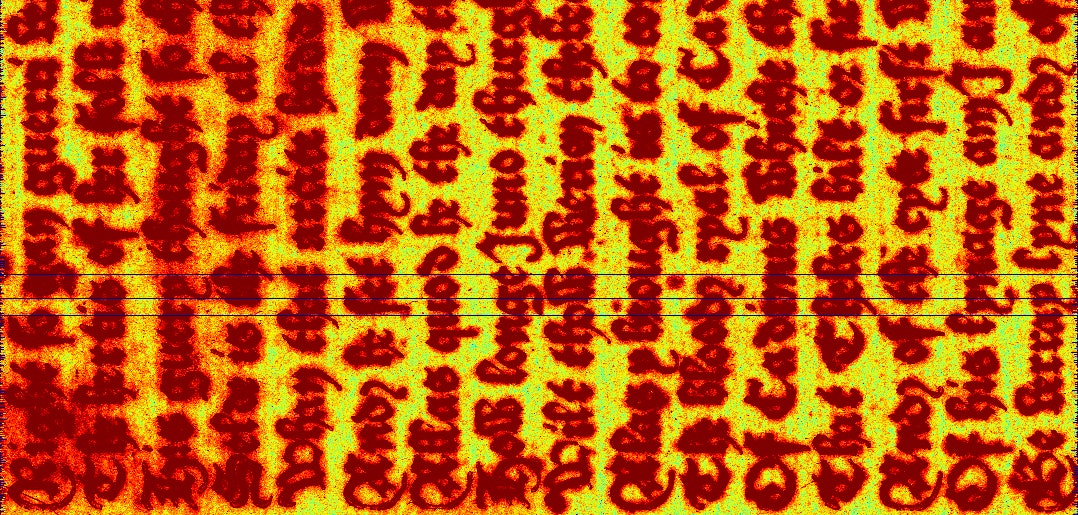
“On comparing some of the Western versus some of the Korean documents,” Gardezi says, “we've seen different types of metal appear, like totally different types of metal, which is very interesting.”
The scientists have also noticed differences in the sorts of ink and stamps used. But at this point in the analysis, we can’t conclude whether the presses are a case of convergent technological evolution — two strikingly similar technologies with similar-ish materials sprouting up within a century of each other yet with no clear relationship. Yet.
Jiyoung Noh is a program specialist at the Research and Development Division of the United Nations Educational, Scientific, and Cultural Organization (UNESCO), and has collaborated with SLAC on the project since its inception.
“We can't really say one affected the other,” Noh notes. But the SLAC may soon change that.
The printing press
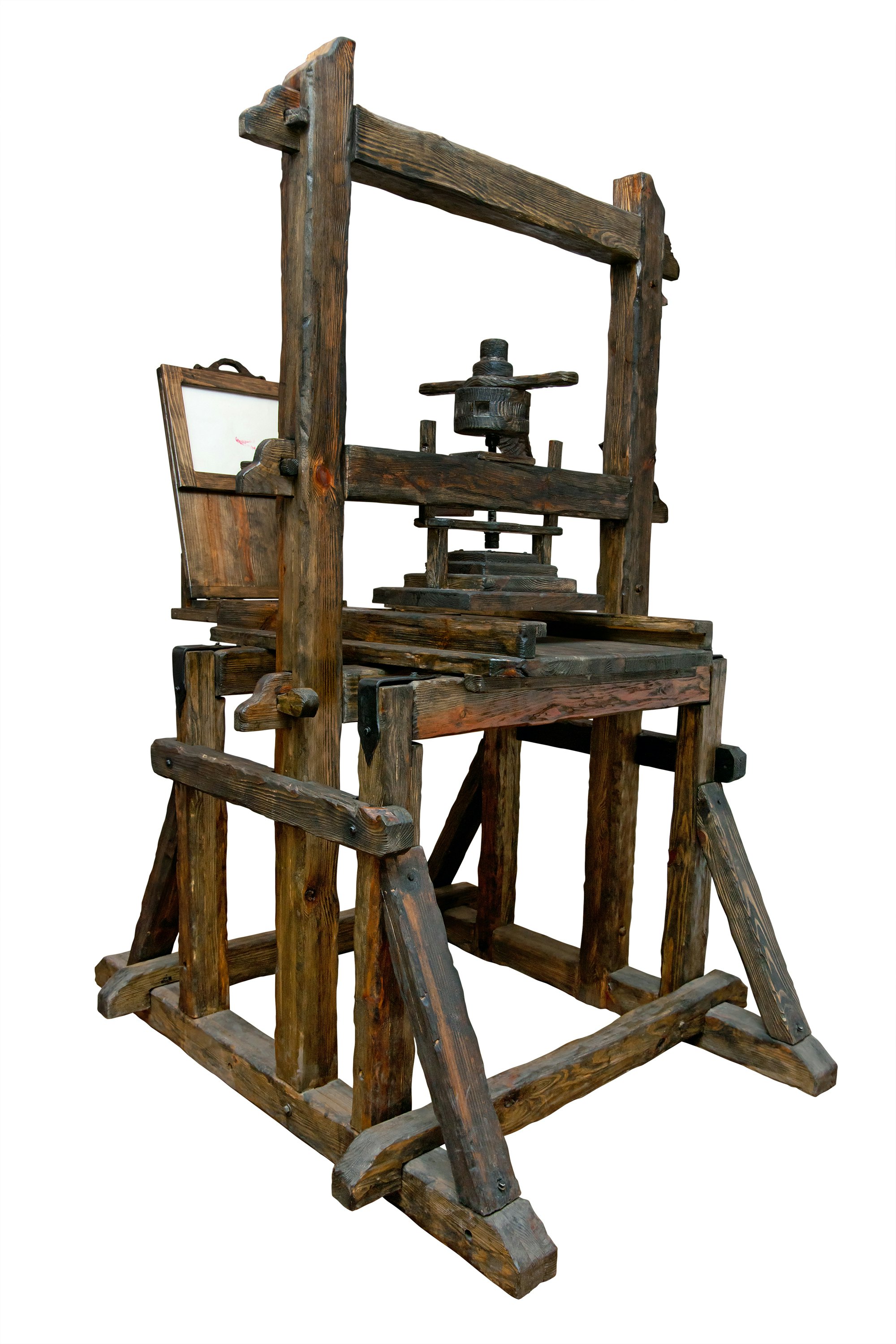
The Gutenberg Press is considered a revolutionary technology because it enabled mass literacy, according to the Western-centric narrative that also claims the printing press first popped up in the 1450s in Germany.
But the oldest known moveable type printing press was developed by Chinese artisan Bi Sheng as early as 1040. This contraption used ceramic characters on an iron plate to press down ink on paper — printing the same document repeatedly. Bi Sheng’s documents and press were lost to time, so what we know of his accomplishments comes from secondhand sources.
By the 12th century, the first printing press with metal type had emerged in what’s now China. The early presses were used to produce currency and official documents, but later, they were also used to print other texts.
“Throughout the world, that is what we know is the earliest human printed document.”
By the 13th century, movable type presses had reached Korea, where they were employed by the Goryeo dynasty. While none of the early documents survived, we do have the Jikji text, a collection of Buddhist teachings printed on a bronze-based moveable type press in 1377. Unfortunately, the only remaining volume of Jikji is cached deep within the National Library of France, and is largely inaccessible.
So the SLAC decided to scan a contemporary copy of the 1442 Spring and Autumn Annals of Confucius, which were created using similar methods as the Jikji.
“This big overall project is called Jikji to Gutenberg, because the Jikji is the Buddhist book that was believed to be printed in Cheonju, Korea, 70-plus years before the Gutenberg Bible, so throughout the world, that is what we know is the earliest human printed document,” Gardezi says.
The beams have it
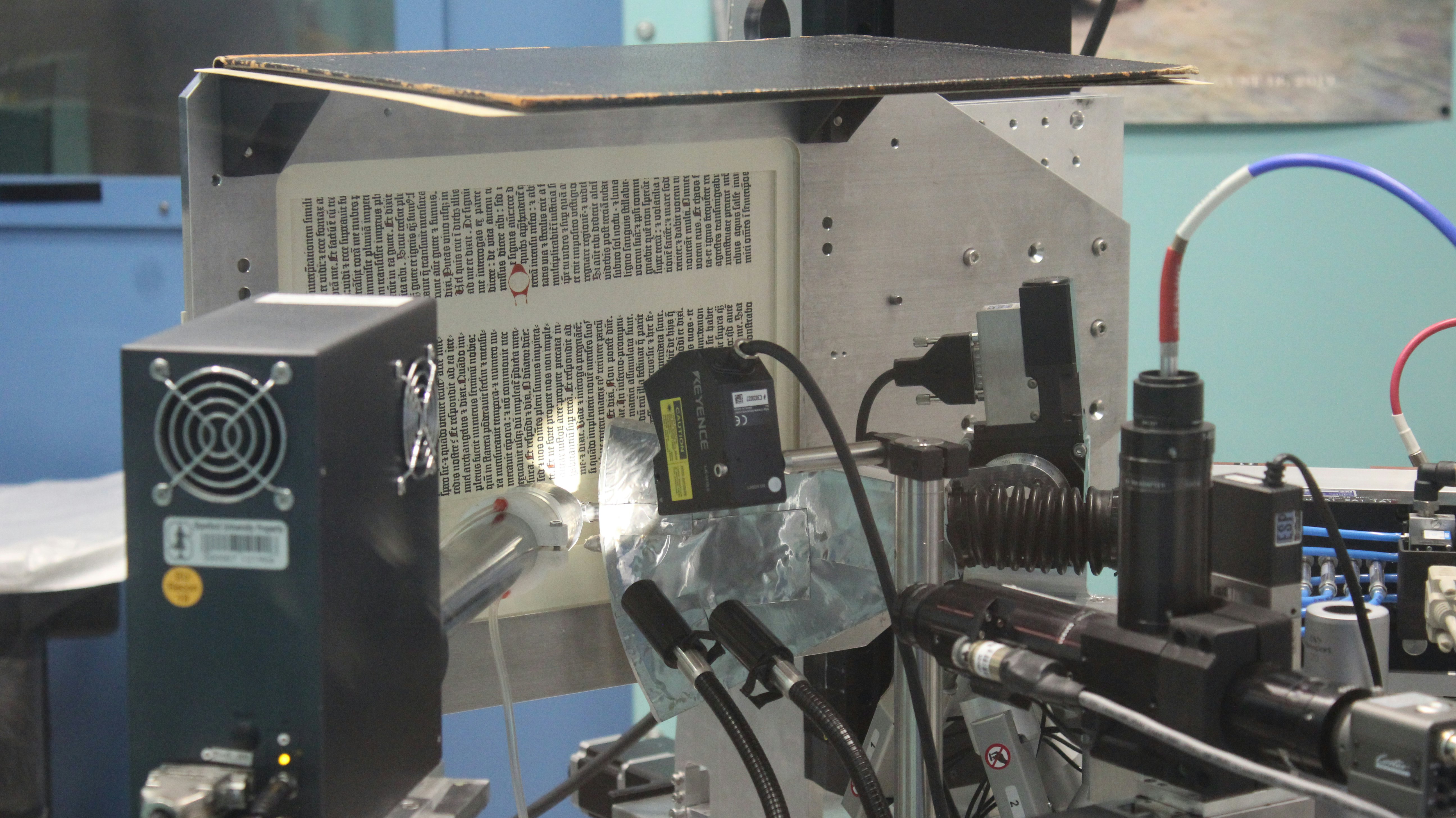
So, how does a linear accelerator enable researchers to decipher thousands-year-old documents? It turns out that the light generated at the SLAC can be harnessed to produce X-rays powerful enough to reveal ancient secrets.
If the metal alloys in the documents are strikingly similar, it may mean that Gutenberg adapted the East Asian concept.
The Stanford Synchrotron Radiation Light Source works a little something like this: It accelerates a stream of powerful electrons around a donut-like structure. When passing through the magnets surrounding the structure, the electrons generate synchrotron radiation, or fine beams of intense X-rays.
When one of these beams strikes the centuries-old paper, it creates an X-ray fluorescence spectrum of many frequencies. These frequencies correspond to the chemicals once punched onto the paper by a metal printing press.
The composition matters because the metal residues can offer clues as to whether Gutenberg was working with a blueprint or not. If the metal alloys in each set of documents are strikingly similar, it may mean that Gutenberg essentially re-envisioned the East Asian concept and adapted the technology to the West. But as mentioned by Gardezi, the evidence so far doesn’t seem to incriminate the German inventor.
On the horizon…
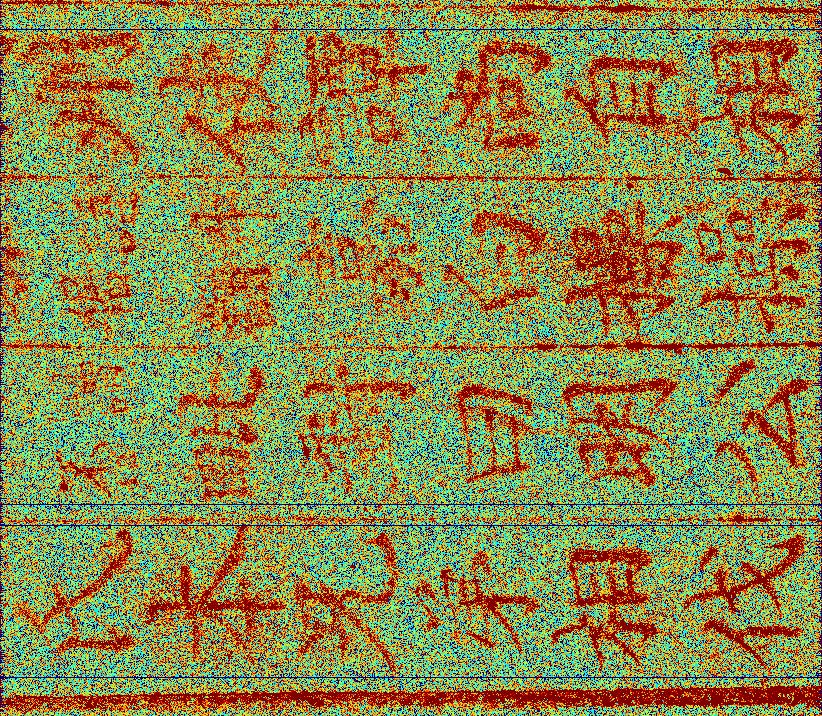
Firing intense X-ray beams at priceless and ancient documents may sound like an odd pursuit, but each page is exposed to the fine beam only for a few milliseconds and so the X-Ray doesn’t get a chance to damage the paper.
The scanning also takes place inside a radiation-proof room. Inside, a rig scans pages held upright, and a bright light travels across each page like a narrow-beam flashlight as a camera watches. Meanwhile, the SLAC scientists sit just outside the room, intently watching the scans arrive on a computer.
As the equipment processes the data, it color-codes certain chemicals on a screen. The text is indecipherable at this point. But the letters don’t matter so much as their chemical residue.
“I think some more chemical analysis is needed to understand if there really are any strong ties.”
“It'll be mesmerizing to find such a discovery. Everybody's going to be very surprised.”
Concentrations of nickel show up as red splotches against the other chemical residue, which all appear blue — a generic assemblage of the other chemicals in the paper. It shows that nickel was part of the fabrication process of the individual letters in the moveable type developed by Gutenberg.
Finding different metal traces on the two historical texts could disprove a direct link between Eastern and Western moveable type innovations. But it could also result from differences in the machines’ fabrication or the availability of certain ingredients on the two continents.
“I think some more chemical analysis is needed to understand if there really are any strong ties,” Gardezi says.
Yet if they can prove a link, then the project could reveal a printing trade network using the Silk Road, in which artisans exchanged metal characters and inks in lieu of spices and fabric. That’s what UNESCO researcher Noh hopes for, although time will have to tell.
“It'll be mesmerizing to find such a discovery,” she says. “Everybody's going to be very surprised.”







